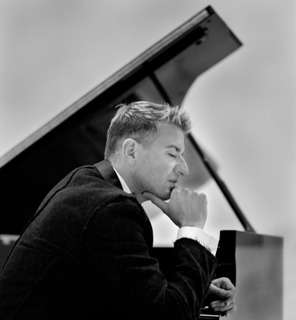|
Back
MaRavelous! New York
Stern Auditorium, Carnegie Hall
12/15/2009 -
Maurice Ravel: Pavane pour une Infante défunte – Miroirs
Johannes Brahms: Sonata No. 3 in F Minor, Opus 5
Jean-Yves Thibaudet (Piano)

J.-Y. Thibaudet (© Kasskara/Decca)
Two nights ago, the young Croatian pianist Martina Filjak attempted the third movement of Ravel’s Miroirs, and we all felt delighted that she performed so nicely. Last night, Jean-Yves Thibaudet, born to the music, mature, and one of the superb pianists of our time, also performed “Une barque sur l’océan”, but the effect was not delight in the pianist. It was the scent of the ocean, the spray of the waves, the image of the tiny craft in the turmoil of the water. In fact, it was the image created by the composer.
Of course, one should not compare M. Thibaudet to another pianist, for he is unique. In the first of two composers played last night, he let the music speak for itself. Ravel once said (amongst many contradictory statements) that his music spoke for itself, and nothing need be added. In a way, this was M. Thibaudet’s attitude. The beginning Pavane started with great delicacy but almost dry: not a whisper of metrical change, not a nuance of color. Yet as he continued, the ornaments were slowly added, lightly put down like an extra rose in a Medieval painting or a leaf fluttering from a faraway tree. By the end, one was drawn in, almost organically, to the ancient century and the ancient dance.
But nothing could be dry in the Miroirs. The finest pianists–Gieseking, Argerich, Perlemuter–have the innate sensitivity to master the works. Others, like Casadesus and Thibaudet, are born for Ravel. In fact, one of Thibaudet’s teachers had been a friend of Ravel’s, so his is a physical linkage.
Yet the first movement “Moths” seemed, despite the exquisite technique, almost laid-back, almost as if he was letting the notes soar about for themselves. M. Thibaudet decided to stand outside, and watch the insects fly by themselves. With his “Oiseaux tristes”, the pianist had a greater challenge. Like a prelude to Messiaen, Maurice Ravel presented a slow picture of “sad birds” (unnamed here, though Messiaen would have titled each one!), and the pianist went to lengths to color each avian flourish against a two-note figuration. The “Boat on the Ocean”, as related above, was almost a literal maritime image. And in the most famous of the five pieces, the “Morning Serenade of the Jester”, M. Thibaudet suddenly became Spanish: never percussive, certainly never blustering as is to often done, but accenting those Spanish rhythms with razor-sharp precision.
The final “Valley of the Bells” is too personal. It brought me back to a midnight sojourn on a 500-foot-high Burmese hill at midnight, where the only lights across the forest were candles from the temples, and the only sounds were faraway temple bells of all tones and dimensions. (The bells are supposed to ring on the hour, but since time is relative in Burma, the sounds are seamless.) M. Thibaudet did the impossible: the infinite bells had different colors, different tones, different reverberations…….This was a Burmese jungle revery.
Of course the pianist could have continued with Ravel for the whole night, but he switched gear for the fiery Brahms Third Sonata. We have all heard it played, with the bookend movements like display pieces (accentuating the Beethoven homages). M. Thibaudet started with a too fiery introduction (where the hell did he hide those falling 32nd notes?), but came back to his inborn poetry just in time for the wondrous slow movement and its great climax. And yes, the finale sometimes whizzed along, but the chordal theme restrained him.
For an encore, he returned to Brahms, but the A Major Intermezzo was like his most poetic Ravel: understated, limpid, and hushed.
Harry Rolnick
|